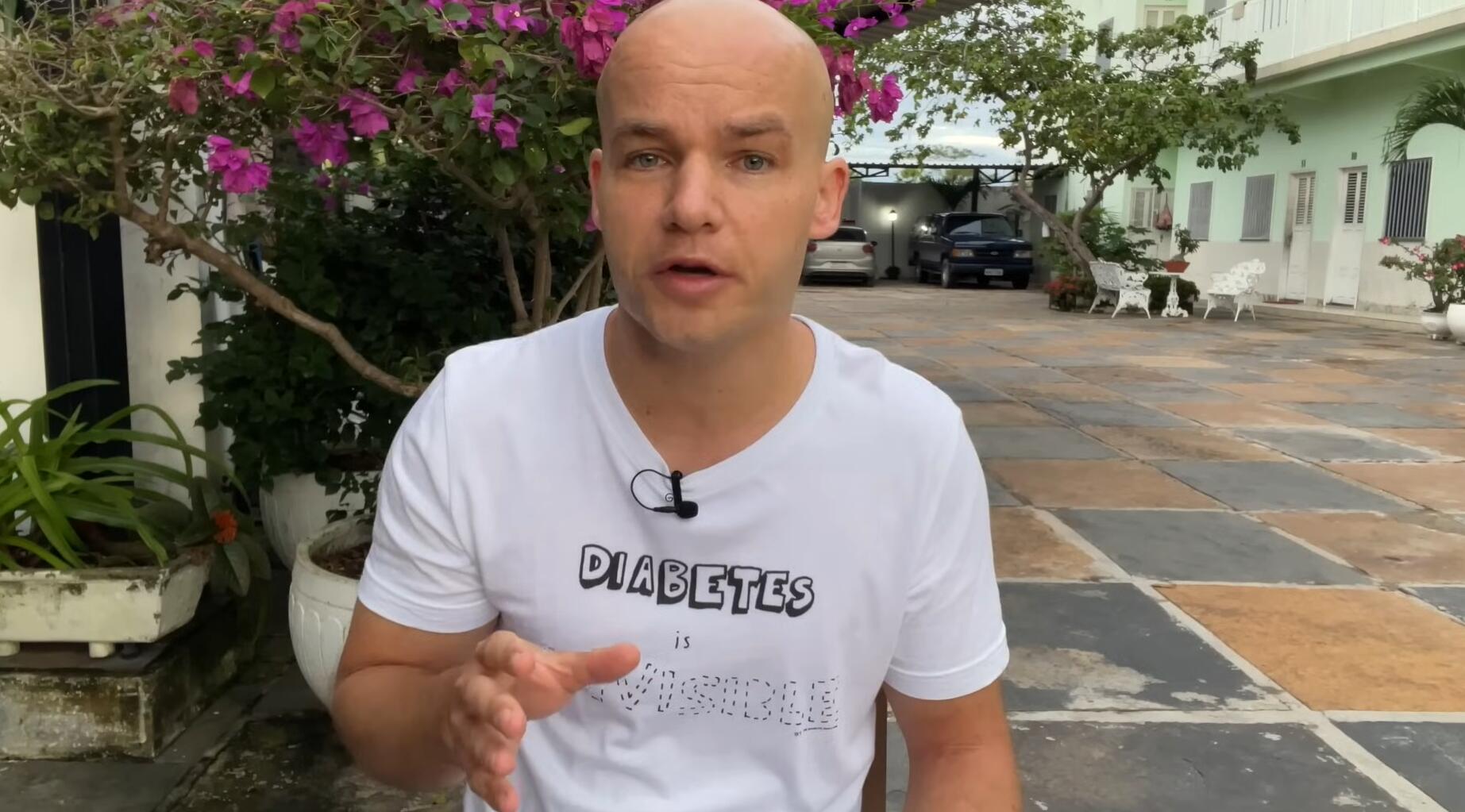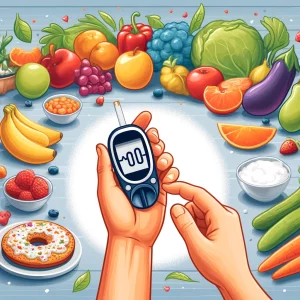In the realm of diabetes management, achieving and maintaining optimal blood sugar levels remains a critical challenge for millions of individuals worldwide. The question that most diabetics ask is: How can blood sugars be lowered quickly and safely? In a comprehensive and insightful video , a seasoned Type 1 diabetic shares his extensive experience and effective strategies for controlling blood glucose levels.
🧬 The Science Behind Blood Sugar Levels
Understanding Diabetes Types:
- Type 1 Diabetes: This condition occurs when the body fails to produce insulin, a hormone essential for regulating blood sugar levels.
- Type 2 Diabetes: Characterized by insulin resistance, where the body produces insulin but cannot use it effectively.
- Type 1.5 Diabetes: A blend of Type 1 and Type 2 diabetes, often requiring a combination of lifestyle changes and medication.
- Pre-Diabetes: A state of higher-than-normal blood sugar levels, which can progress to Type 2 diabetes if not managed properly.
Key Metrics:
- HbA1c Levels: HbA1c is a measure of average blood sugar levels over the past three months. A normal HbA1c level is below 5.7%, while levels above 6.5% indicate diabetes. The presenter in the video successfully reduced his HbA1c from 13.3% to 6%, demonstrating the effectiveness of his methods.
📉 From Highs to Healthy: A Personal Transformation
The video presenter, who has lived with Type 1 diabetes for 35 years, recalls his struggle with managing his blood sugars. His HbA1c test results were as high as 13.3%, reflecting average blood sugars around 350 milligrams per deciliter. This level is alarmingly high and poses significant health risks. However, through persistent effort and adopting various strategies, he has consistently achieved an HbA1c of 6%, meaning his average blood sugars now hover around 110 milligrams per deciliter— a remarkable transformation.
💡 Effective Strategies for Blood Sugar Management
1. Exercise Regularly:
Engaging in high-intensity exercise or interval training for at least 30 minutes daily has been a game-changer for the presenter. Exercise boosts insulin sensitivity and helps reduce body fat, both of which are crucial for maintaining optimal blood sugar levels.
- Impact: Regular physical activity has a profound impact on blood sugar levels, especially overnight. High-intensity workouts help lower blood sugars significantly, making it a cornerstone of effective diabetes management.
2. Diet Adjustments:
Reducing carbohydrate intake, particularly in the evening, is another key strategy. The presenter emphasizes the importance of avoiding carbs after 7 p.m. This practice helps maintain stable blood sugars overnight, providing a solid foundation for the next day.
- Strategy: Opting for low-carb foods for dinner and steering clear of high-carb meals late at night can prevent spikes in blood sugar levels. This approach ensures a smoother, more predictable blood sugar curve.
3. Alcohol Consumption:
Moderate alcohol consumption, such as 1-2 glasses of wine, can lower morning blood sugar levels for some individuals. The presenter shares that alcohol reduces liver activity that raises blood glucose levels, though he cautions against using alcohol as a primary strategy due to the risks of hypoglycemia.
- Important Note: While moderate alcohol consumption can be beneficial for some, it is essential to monitor blood sugar levels closely and be aware of the potential risks. Consulting with a healthcare provider before incorporating alcohol into a diabetes management plan is advisable.
4. Intermittent Fasting:
Intermittent fasting, a popular method for burning fat and increasing insulin sensitivity, involves dividing the day into eating and fasting periods. The presenter began with a 13-hour fast (6 p.m. to 7 a.m.) and gradually extended the fasting window.
- Effectiveness: This method has been particularly effective in improving morning blood sugars. Intermittent fasting helps regulate insulin levels and promotes a more balanced metabolic state.
5. Hydration:
Starting the day with a large glass of water is a simple yet effective way to manage blood sugar levels. Proper hydration supports overall health and can help stabilize blood sugars.
🚶♂️ Practical Approaches to Lower Blood Sugar
Despite best efforts, there are times when morning blood sugar levels remain high. The presenter shares several practical methods to address this issue:
Day 1: Walking
- 6:00 AM: Blood sugar levels were creeping up, so the presenter decided to take a 30-minute walk.
- 6:15 AM: After 15 minutes of walking, blood sugar levels showed a slight increase, which was expected due to the delay between blood sugar and sensor glucose readings.
- 6:30 AM: Completed the walk, and although blood sugar levels remained the same initially, a trend reversal was observed shortly after.
- 7:00 AM: Blood sugar levels dropped to 6.3 mmol/L, a satisfactory level for the presenter.
Day 2: Light Jogging
- 6:00 AM: Started with a blood sugar level of 7.5 mmol/L and decided to go for a light jog.
- 6:15 AM: After 15 minutes, blood sugar began to drop.
- 6:30 AM: Finished jogging, and blood sugar dropped to 6.6 mmol/L.
- 7:00 AM: Blood sugar reached 4.8 mmol/L, demonstrating the effectiveness of light jogging.
Day 3: Rapid-Acting Insulin
- 6:45 AM: Blood sugar level was 7.3 mmol/L, and the presenter took 0.8 units of rapid-acting insulin.
- 7:15 AM: Blood sugar dropped to 6.7 mmol/L.
- 7:45 AM: Blood sugar reached 5.2 mmol/L, confirming the effectiveness of insulin correction.
⚠️ Safety and Precautions
The presenter emphasizes the importance of safety when experimenting with new methods to lower blood sugar. Key precautions include:
- Consulting with a Healthcare Provider: Before making significant changes to diabetes management plans, it is crucial to consult with a doctor to understand personal insulin needs and correction ratios.
- Monitoring Blood Sugar Levels: Keeping a close watch on blood sugar levels to prevent hypoglycemia, especially when engaging in physical activities or adjusting insulin doses.
- Carrying Quick Carbs: Always having quick sources of carbohydrates, such as glucose tablets or juice, on hand in case of low blood sugar episodes.
🍳 Breakfast Tips for Diabetics
Maintaining stable blood sugar levels after breakfast can be challenging. The presenter offers several breakfast tips to help:
- Low Carb Options: Eggs, avocado, protein bread, smoked salmon, and Greek yogurt.
- Healthy Carbs: Unsweetened oatmeal and low glycemic index fruits like berries.
- Green Veggies and Legumes: Incorporating these into breakfast can help maintain stable blood sugars.
- Avoid: High-sugar options like orange juice, pancakes, sweetened cereal, and pastries, which can cause significant spikes in blood sugar levels.
🔍 Insights and Analysis
The presenter’s journey and strategies offer valuable insights into diabetes management:
- Exercise Impact: Regular physical activity, particularly high-intensity workouts, plays a crucial role in improving insulin sensitivity and lowering blood sugar levels. The documented reductions in blood sugar levels after exercise highlight its effectiveness.
- Dietary Adjustments: Reducing carbohydrate intake, especially in the evening, helps maintain stable blood sugar levels overnight. This strategy provides a strong foundation for managing diabetes effectively.
- Intermittent Fasting: This method has shown significant benefits in improving morning blood sugar levels and overall insulin sensitivity. The gradual increase in fasting duration is a practical approach to incorporating this method.
- Hydration: Starting the day with a large glass of water is a simple yet effective strategy for managing blood sugar levels.
- Practical Methods: The presenter’s documentation of different methods to lower morning blood sugars—walking, jogging, and rapid-acting insulin—provides practical solutions that can be tailored to individual needs.


